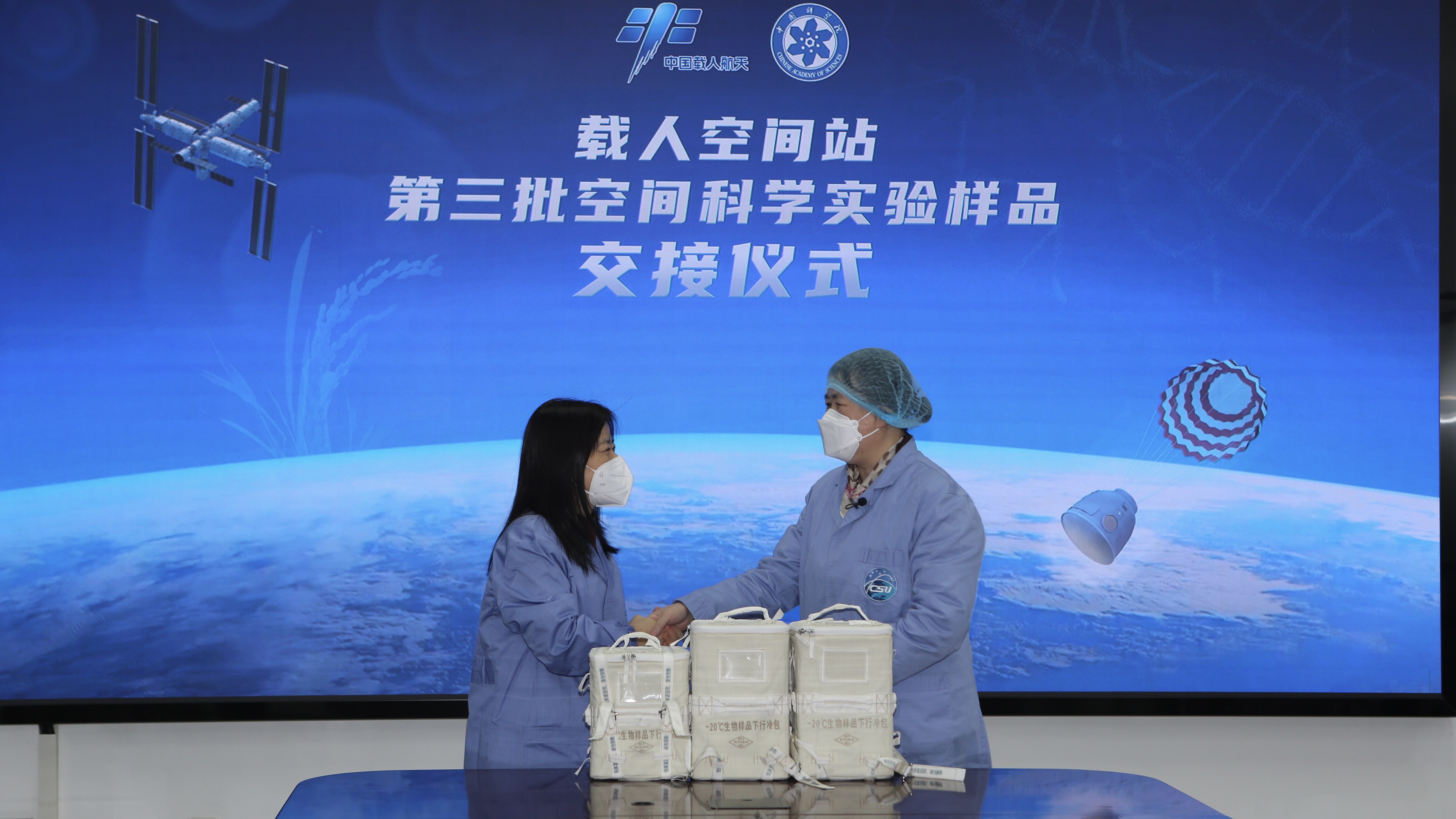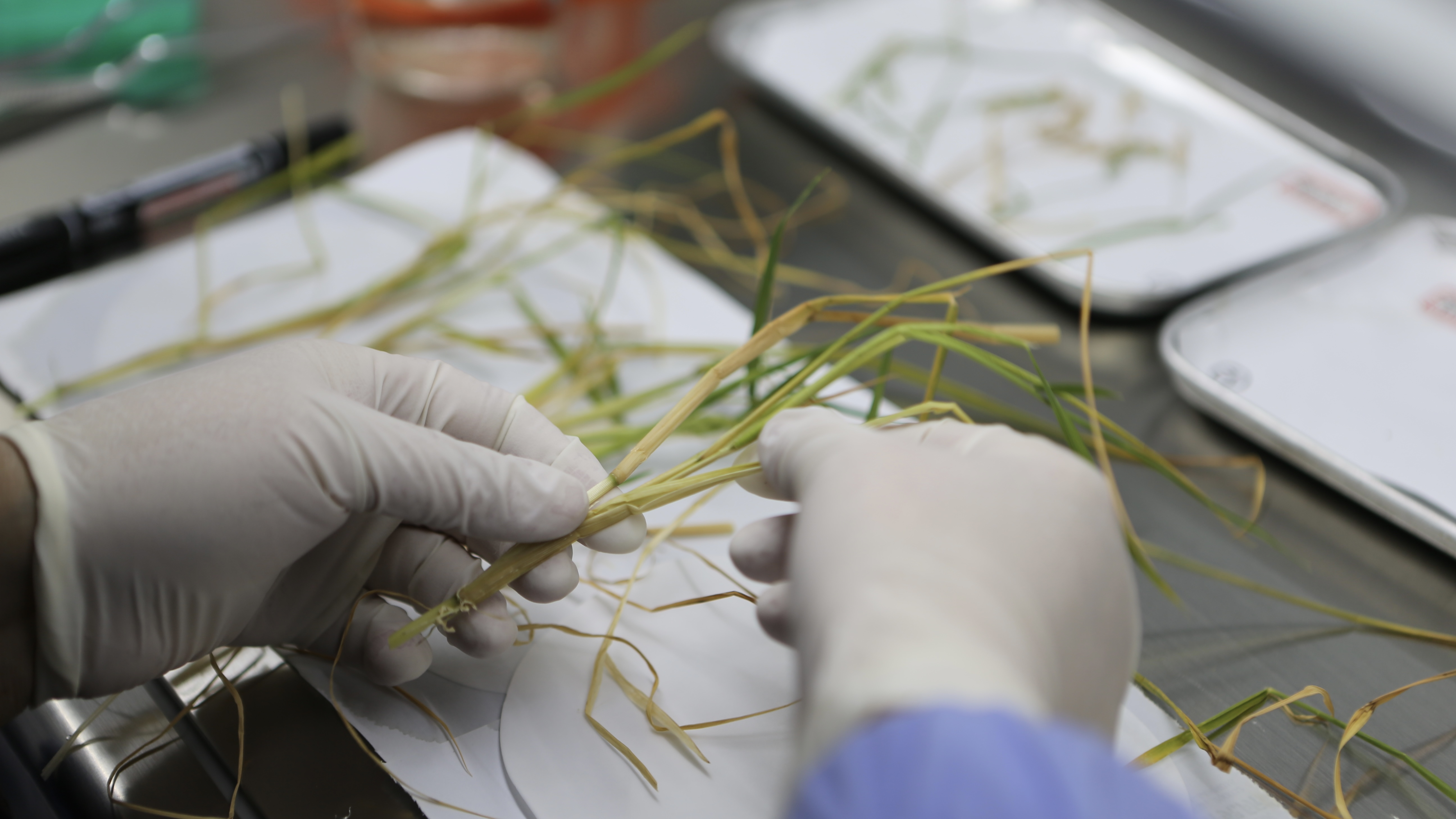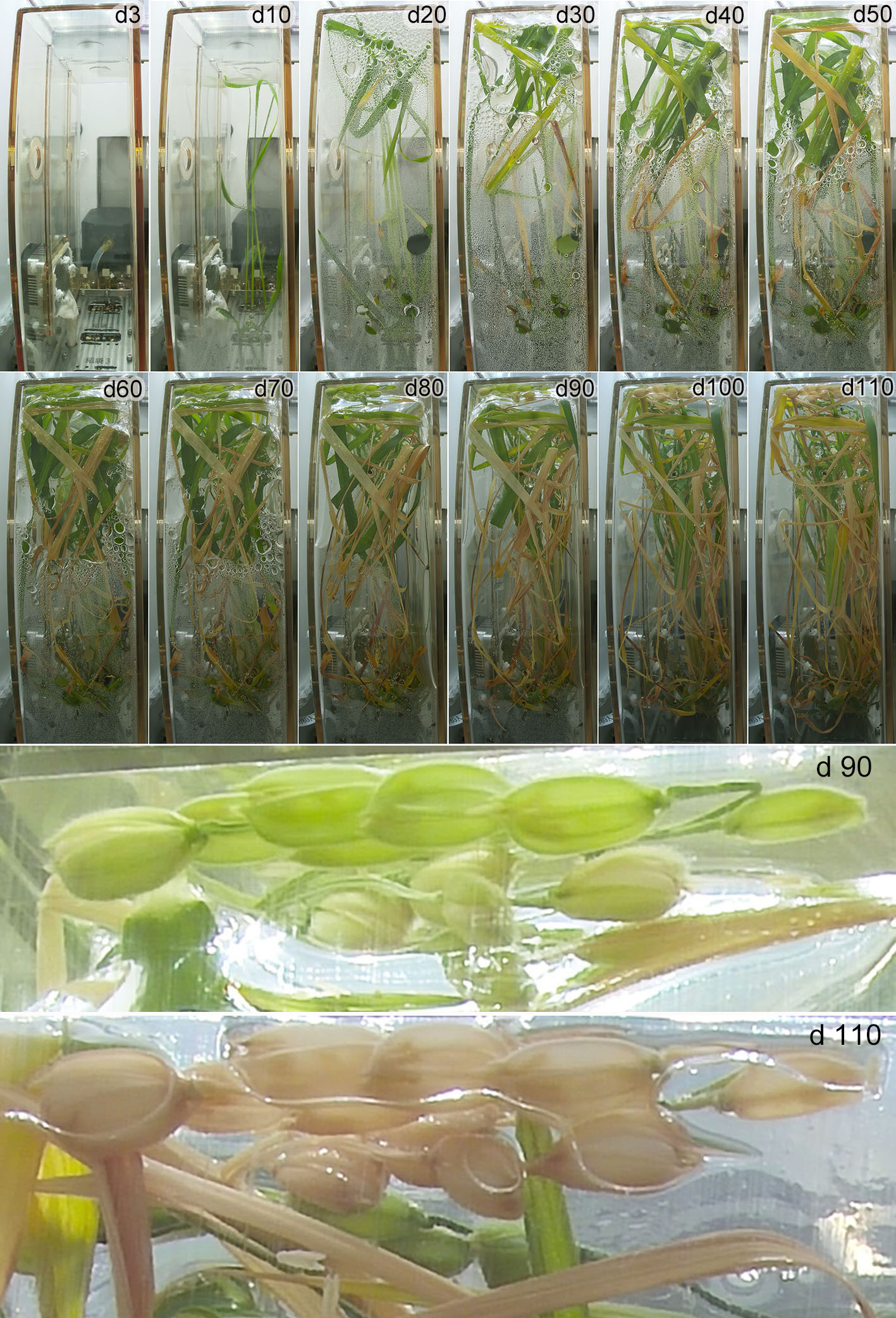
A third batch of space science experimental samples is handed over to scientists. /CAS
A third batch of space science experimental samples is handed over to scientists. /CAS
Space science experimental samples from the China Space Station (CSS) were sent to Beijing early on Monday morning, after the Shenzhou-14 return capsule landed on Sunday night at the Dongfeng Landing Site in northern China, according to the Chinese Academy of Sciences (CAS).
It was the third batch of space science experimental samples grown in the CSS and it was handed over to CAS's Technology and Engineering Center for Space Utilization.

Rice samples brought back to Earth by the Shenzhou-14 return capsule, December 4, 2022. /CAS
Rice samples brought back to Earth by the Shenzhou-14 return capsule, December 4, 2022. /CAS
The samples included three cold packs of biological samples with seeds of rice and Arabidopsis, which went through a 120-day full cultivation process in space.
The CAS claimed that this was the first time scientists had ever received rice seeds cultivated in orbit and said they would analyze the samples through the angles like molecular cytology and metabolism.
"This is to find out the effect of space microgravity on rice and Arabidopsis and further develop crops to adapt to space and find the theoretical basis to utilize the space microgravity environment," the CAS said in a press release on Monday morning.

Rice grown in the China Space Station. /CAS
Rice grown in the China Space Station. /CAS
The samples also include four boxes of materials from the container-free material science laboratory cabinet, the country's first and the world's second such in-orbit facility.
The CAS said that the cabinet or the rack had been operating for more than 590 days in space and finished experiments on seven boxes of such materials and successfully heated up 73 samples.